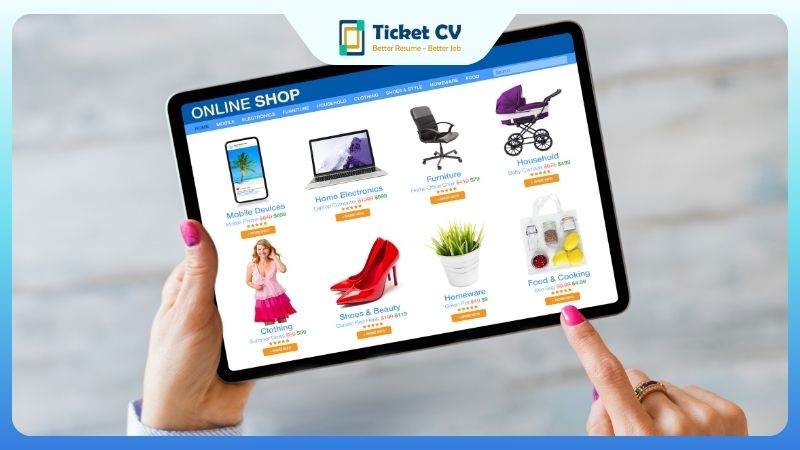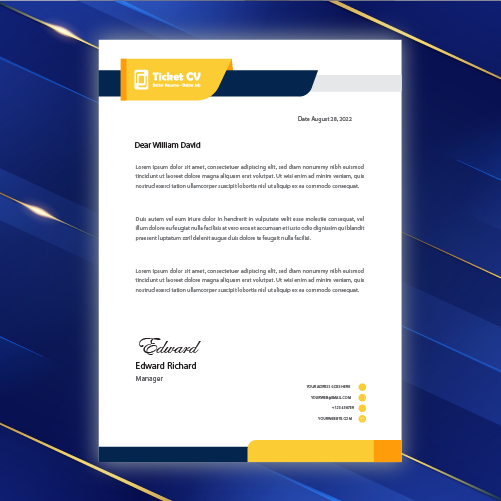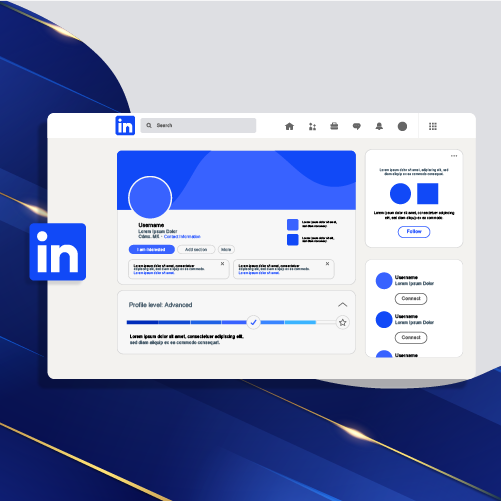Having a personal website is crucial in today’s digital age. It serves as a powerful tool to showcase one’s skills, accomplishments, and personality. Utilizing a website builder can significantly ease the process of creating and managing a personal website, offering numerous benefits such as cost-effectiveness, user-friendly interfaces, and customizable templates. When selecting a website builder, it’s essential to consider factors like ease of use, design flexibility, e-commerce capabilities, and customer support.
In this post, we will explore the top personal website builders available today. By examining their features, pricing structures, and user experiences, readers can make informed decisions about which platform best suits their needs. Whether you’re an artist looking to display your portfolio or a professional aiming to enhance your online presence, choosing the right website builder is pivotal in establishing a compelling digital footprint.
Contents
ToggleEvaluating Personal Website Builders in 2024
User-friendly Interface
The user-friendly interface is a crucial aspect. Users should evaluate the ease of use and intuitive design for creating and customizing their websites. A seamless, drag-and-drop interface can significantly enhance the website building experience, especially for beginners.
Template Selection
The variety and quality of templates available play a vital role in creating a professional and visually appealing website. Users should look for personal website builders that offer a diverse range of templates suitable for different industries and purposes. This ensures that users can find the perfect template to represent their personal brand effectively.
Mobile Responsiveness
In today’s digital landscape, mobile responsiveness is non-negotiable. It’s essential to assess how well the website builder’s templates adapt to different devices, ensuring optimal user experience across smartphones, tablets, and desktops. Statistics indicate that mobile devices accounted for 54% of global internet traffic in 2021 – emphasizing the importance of mobile-friendly websites.
SEO Features
Search Engine Optimization (SEO) is integral to improving visibility and ranking on search engines. Therefore, evaluating the built-in SEO tools and capabilities of personal website builders is critical. These features can include metadata customization, sitemaps generation, and integration with Google Analytics for tracking performance.
Advantages and Disadvantages
Personal website builders offer advantages such as ease of use without requiring coding knowledge, cost-effectiveness compared to hiring a professional web developer, extensive customization options through various templates and designs, as well as simplified maintenance with included hosting services. However, they also come with limitations such as restricted flexibility in terms of customization and functionality which may impact scalability as the website grows; free versions may include branding from providers affecting professionalism; some platforms have SEO restrictions impacting optimization efforts.
Key Features and Specifications
Key features encompass customizable templates for unique designs tailored to individual preferences; an intuitive drag-and-drop interface facilitating easy website building even for novices; built-in SEO tools enabling users to optimize search engine visibility; responsive design ensuring seamless viewing across all devices.
Design Considerations
Design considerations revolve around prioritizing a user-friendly interface for effortless customization; ensuring mobile responsiveness guarantees smooth viewing experiences across various devices; integrating with third-party tools and plugins enhances functionality; offering access to diverse templates amplifies design options.
E-commerce Capabilities
E-commerce capabilities are vital for those looking to sell products or services directly from their personal websites. It’s essential to seek secure payment gateways, easy product management features along with integration possibilities with popular e-commerce platforms like Shopify or WooCommerce – pivotal elements contributing towards successful online stores.
Security Concerns
Security concerns encompass SSL encryption ensuring data security; regular software updates protecting against vulnerabilities; secure hosting minimizing cyber attack risks; strong password protection safeguarding access rights – collectively establishing trustworthiness within personal websites.

Understanding the Website Builder Landscape
Reasons for Using a Personal Website Builder
Personal website builders offer an easy and user-friendly interface, catering to non-technical users. With intuitive drag-and-drop features, individuals can create their websites without the need for coding skills, making it accessible to a wide audience. Customization options allow users to reflect their personal branding and style effectively.
For those seeking a cost-effective solution, personal website builders present a compelling option compared to hiring professional web designers. The affordability of these platforms enables individuals to establish their online presence without incurring substantial expenses. Moreover, the ability to showcase one’s skills, portfolio, and achievements in one centralized location provides a powerful tool for personal branding and self-promotion.
Target Audience Identification
Identifying the target audience is crucial when creating a personal website that resonates with intended users. By understanding the demographics, interests, and needs of the target audience, individuals can tailor their website content and design effectively. This process involves conducting market research and utilizing analytics tools to pinpoint specific characteristics of the target audience accurately.
The insights gained from identifying the target audience will significantly influence decisions related to branding, content strategy, and user experience design for the personal website. For instance, if the target audience comprises young professionals interested in visual arts, incorporating visually engaging elements into the website design becomes paramount for capturing their attention effectively.
Ease of Use and Support Systems
Personal website builders typically offer an intuitive drag-and-drop interface that simplifies the process of building a professional-looking site. This feature is particularly beneficial for individuals who may not possess advanced technical skills but desire an aesthetically pleasing online platform. Moreover, responsive design templates ensure seamless mobile optimization, catering to users accessing websites across various devices.
In addition to ease of use features, 24/7 customer support plays a pivotal role in ensuring individuals receive quick assistance with any issues they encounter while using personal website builders. Access to extensive knowledge bases and tutorials further empowers users with self-help resources should they encounter challenges or seek additional guidance during the website creation process.
By considering these factors—ease of use features such as drag-and-drop interfaces and responsive design templates alongside robust customer support systems—individuals can make informed decisions when selecting a personal website builder that aligns with their specific needs.
Financial Aspects of Website Builders
Pricing and Starting Costs
Pricing plans for personal website builders vary widely, with some platforms offering free basic plans while others have tiered pricing for additional functionality. Starting costs may include domain registration, hosting fees, and premium templates or plugins. It’s essential to consider long-term scalability and potential upgrade expenses when evaluating initial pricing.
Free vs. Paid Builder Comparison
Free website builders offer basic features with limited customization options, whereas paid website builders provide advanced features, professional templates, and better customer support. Free builders may display ads on your site, while paid builders offer ad-free experiences. Paid builders often include domain name registration and hosting services, saving time and effort.
Cost Analysis of Ongoing Use
Monthly subscription costs for personal website builders vary between $5 to $40, depending on the platform and features. Additional expenses may include domain name registration, premium templates, and third-party integrations. Free plans are available but come with limitations such as ads, limited storage, and a lack of a custom domain. It’s crucial to consider long-term costs and scalability when choosing a personal website builder.
When comparing the financial aspects of different personal website builders, it’s important to weigh the cost against the value provided in terms of features and support. While some platforms offer free basic plans with limited functionality to entice users initially, they may charge substantially for additional features or scaling up.
Paid website builders generally provide a more comprehensive set of tools without hidden fees associated with add-ons or upgrades that can inflate costs over time. For instance, Wix offers a free plan with limited bandwidth and storage but charges extra for removing Wix ads from the site. Conversely, Squarespace provides an all-in-one package that includes hosting services without any upsells or surprise fees.
Considering ongoing use costs is vital as well since monthly subscription prices can add up over time. For example, Weebly’s pricing ranges from $6 to $26 per month based on different tiers offering various features like eCommerce capabilities or membership registration functionalities.
Optimizing Your Personal Website’s Potential
Latest Web Design Trends
Dark Mode and Low-Light Designs Dark mode and low-light designs are gaining popularity due to their ability to reduce eye strain, especially in low-light environments. These designs also provide a sleek and modern aesthetic, appealing to a wide range of users.
Minimalist and Clean Layouts Minimalist and clean layouts with ample white space are in high demand as they offer a contemporary look while enhancing the overall user experience. The use of negative space helps draw attention to key elements on the website, improving visual hierarchy.
Interactive Scrolling Effects and Animations Websites with interactive scrolling effects and animations have become increasingly popular as they add depth and engagement. These features can captivate visitors, encourage exploration, and make the browsing experience more dynamic.
Mobile-First Design Approach A mobile-first design approach is essential as mobile traffic continues to dominate online interactions. With over 50% of web traffic originating from mobile devices, ensuring that your website is optimized for mobile usage is crucial for reaching a wider audience.
Tips for Building a Successful Site
User-Friendly Website Builder Selection When choosing a personal website builder, opt for one that offers customizable templates and intuitive features. This allows you to create a unique website tailored to your preferences without requiring extensive technical expertise.
Mobile Optimization Optimizing your site for mobile devices is paramount in today’s digital landscape. Considering that approximately 61% of users are unlikely to return to a mobile site they had trouble accessing, ensuring seamless mobile functionality is key to retaining visitors.
High-Quality Content Creation Creating high-quality, engaging content is fundamental for attracting and retaining visitors. Compelling blog posts, articles, or multimedia content can significantly enhance user engagement while also improving search engine visibility through relevant keywords.
SEO Best Practices Implementation Utilize SEO best practices such as incorporating relevant keywords into your website content, optimizing meta tags and descriptions, and creating valuable backlinks. Implementing these strategies can improve your site’s visibility on search engines like Google or Bing.
Monetization Strategies
Affiliate Marketing Opportunities By leveraging affiliate marketing programs, individuals can promote products related to their niche on their personal websites using personalized links. This method enables them to earn commissions based on the sales generated through these links.
Ad Revenue Generation Generating income through ad revenue involves displaying advertisements from ad networks such as Google AdSense on your personal website. As traffic grows, this strategy can become a lucrative source of passive income.
Digital Product Sales Selling digital products like e-books, courses, or downloadable resources directly from your website presents an opportunity for monetization. Offering valuable digital products aligned with your expertise or interests can be financially rewarding.
Membership Subscriptions Offerings Implementing membership subscriptions allows you to offer premium content or exclusive services in exchange for a recurring fee from subscribers. This creates a steady stream of income while providing additional value to dedicated followers.

The Practicalities of Building a Personal Website
Steps to Create Your Site
Choosing the right domain name is essential for personal branding and online visibility. A domain name that reflects your identity or profession can leave a lasting impression on visitors. It’s advisable to select a user-friendly website builder platform that offers intuitive customization options, allowing you to create a professional-looking site without extensive technical knowledge. Selecting a visually appealing template that aligns with your personal brand can enhance the overall aesthetics of your website.
Customizing the design and layout of your website is crucial in reflecting your unique brand identity. Incorporating elements such as color schemes, fonts, and imagery that resonate with your personal or professional image can contribute to an engaging user experience. Moreover, optimizing your site for search engines by utilizing relevant keywords and meta descriptions can significantly impact its discoverability and organic traffic.
Speed Optimization Techniques for WordPress
Utilizing lightweight and fast-loading themes is paramount. Statistics show that 47% of consumers expect a web page to load in two seconds or less, emphasizing the importance of seamless user experiences. Implementing caching plugins can effectively improve website loading speed by storing frequently accessed data, reducing server response time, and minimizing latency for returning visitors.
Optimizing images by compressing and resizing them for web use contributes to faster page loading times. According to research findings, 39% of users will stop engaging with a website if images take too long to load. Minimizing HTTP requests through the combination and minification of CSS and JavaScript files further enhances website performance by reducing file sizes and server processing time.
Transitioning Between Website Builders
When considering transitioning between website builders, evaluating the ease of transferring content and design elements is imperative. Seamless migration processes ensure minimal disruption to the continuity of your online presence while enhancing efficiency during transitions. Furthermore, compatibility with existing domains and hosting providers should be prioritized when switching to a new website builder platform.
Evaluating the availability of customer support resources during transition periods is essential for addressing any potential challenges or technical issues that may arise. Ensuring continuity in SEO efforts throughout the transition process is critical in preserving search engine rankings and maintaining organic traffic levels.
Comprehensive Review of Free Website Builders
Highlighting Best Free Options
Several options stand out for their free offerings. Wix, known for its user-friendly interface, provides a wide range of templates suitable for various industries. Weebly’s intuitive drag-and-drop editor and customizable themes make it an excellent choice for personal websites and small businesses. WordPress.com allows users to create a free website with basic features and the option to upgrade later, offering flexibility and scalability. Google Sites enables easy integration with other Google services, making it simple to create a personal website.
E-commerce in Free Plans
In the realm of free plans offered by these website builders, there are limitations. Basic payment processing options are available for small-scale selling; however, restrictions on the number of products and transactions exist. Users can upgrade to premium plans for advanced e-commerce functionality.
Wix stands out as an excellent choice due to its user-friendly interface and extensive template library catering to various industries. With over 800 designer-made templates covering diverse categories such as business, online store, photography, music, design, restaurant and food – individuals can easily find a suitable design for their personal websites.
Weebly’s drag-and-drop editor simplifies the process of creating a personalized website without requiring coding skills. Its customizable themes allow individuals to tailor their websites according to their preferences or branding requirements.
WordPress.com offers a free plan that includes essential features such as dozens of free themes, basic design customization, 3GB storage space for media files like images and videos along with built-in social sharing capabilities.
Google Sites’ seamless integration with other Google services like Drive makes it convenient for users who are already utilizing Google’s ecosystem. It helps in effortless collaboration while allowing users to embed content from other Google apps directly into their site.
In terms of e-commerce within free plans provided by these platforms – while they do offer basic payment processing options suitable for small-scale selling such as PayPal integration or limited product listings – there are constraints on the number of products that can be displayed or sold within these plans.
Although these platforms provide opportunities for small-scale selling through their free plans, users looking for advanced e-commerce functionalities such as inventory management or unlimited product listings would need to consider upgrading to premium plans offered by these website builders.
Making an Informed Builder Selection
Consider Your Specific Needs and Goals for the Website
When choosing the best personal website builder, it’s crucial to assess your specific needs and goals for the website. Whether it’s a portfolio, blog, or e-commerce site, understanding the purpose of your website will guide you in selecting a builder that aligns with your objectives.
Evaluate the Builder’s Ease of Use and Available Features
Ease of use is paramount when selecting a personal website builder. Look for intuitive drag-and-drop interfaces and pre-designed templates that suit your style. Consider essential features such as SEO tools, mobile responsiveness, and integration capabilities with third-party apps.
Compare Pricing Plans and Consider Long-Term Scalability
Pricing plans vary among different website builders. It’s essential to compare these plans while considering long-term scalability. Some builders offer free plans with limited features but impose restrictions on domain names or display advertisements. Conversely, premium plans may provide advanced features but come at a cost.
Look for Customer Support Options and User Reviews to Gauge Satisfaction
Customer support plays a pivotal role in ensuring a smooth website building experience. Prioritize builders that offer various support channels like live chat, email, or phone support. Delve into user reviews to gauge customer satisfaction levels regarding the platform’s reliability and responsiveness.
Factors to Avoid in Selection Process
Avoid overly complex user interfaces as they can hinder the website building process. Limited customization options may restrict creativity and uniqueness. Inadequate customer support could lead to unresolved issues and frustration. High ongoing costs can strain budgets and limit long-term sustainability.
How to Choose the Best Option
- Assess specific needs and goals.
- Evaluate ease of use and customization.
- Compare pricing plans and additional features.
- Research customer support resources.

Going Beyond DIY Website Building
Professional Design and Functionality
Professional design and functionality are crucial. Unlike DIY builders, professional development ensures custom designs tailored to individual needs. It offers advanced functionalities such as e-commerce integration, complex databases, and interactive elements.
Customization and Branding Options
With a professional website builder, users can enjoy extensive customization and branding options. This includes unique templates, personalized color schemes, and bespoke features that reflect their distinct identity. In contrast, DIY builders may have limitations in achieving a truly customized look and feel.
SEO Optimization and Analytics Integration
Professional website development facilitates robust SEO optimization and seamless analytics integration. This is essential for enhancing online visibility and tracking performance metrics. According to SERP findings, websites with proper SEO implementation experience an average 200% increase in organic traffic.
Scalability and Future Growth
Scalability is a key advantage of professional development over DIY builders. As the user’s online presence expands or their business grows, a professionally developed website can effortlessly accommodate increased traffic, content volume, and additional features without compromising performance.
DIY vs Professional Development
DIY website builders offer affordability and ease of use for beginners. They are suitable for simple personal websites with basic functionalities but may lack the flexibility needed for more complex projects. On the other hand, professional development ensures custom design, advanced functionality, scalability, and is ideal for business-oriented sites or those requiring intricate features. Considering budget constraints or long-term goals is vital when choosing between these two options.
Post-Development Site Transfers
Post-development site transfers enable seamless migration to new hosting providers without data loss or downtime. It involves transferring all files, databases, configurations while maintaining SEO value during the process. Utilizing post-development site transfers can aid in upgrading to better hosting services for improved website performance without disrupting user experience.
Conclusion
In evaluating personal website builders for 2024, it’s clear that understanding the landscape and financial aspects is crucial. Optimizing a personal website’s potential and considering the practicalities of building one are essential steps. The comprehensive review of free website builders and making an informed selection are pivotal in going beyond DIY website building. By considering these factors, individuals can make well-informed decisions when choosing the best personal website builder for their needs.
For those seeking to establish a strong online presence, carefully considering these aspects will lead to a more effective and impactful personal website. It’s important to remember that the right website builder can significantly contribute to one’s online success. Therefore, taking the time to evaluate the options thoroughly is paramount.
Frequently Asked Questions
What are the key factors to consider when evaluating personal website builders?
When evaluating personal website builders, consider ease of use, design flexibility, available features, customer support, pricing, and scalability to ensure it meets your current and future needs.
How can one optimize the potential of their personal website?
To optimize your personal website’s potential, focus on creating high-quality content, optimizing for search engines, utilizing social media promotion, ensuring mobile responsiveness, and regularly updating and maintaining your site.
What financial aspects should be considered when choosing a website builder?
Consider the initial cost, ongoing subscription fees or hosting costs, additional expenses for premium features or plugins, potential transaction fees for e-commerce functionality, and any limitations on free plans when evaluating the financial aspects of a website builder.
What are the practicalities involved in building a personal website?
Practicalities of building a personal website include choosing a domain name and web hosting provider, selecting an appropriate template or theme that aligns with your brand and goals, organizing content effectively, optimizing for performance and security considerations.
How can one make an informed selection when choosing a website builder?
To make an informed selection when choosing a website builder, thoroughly research and compare options based on your specific needs. Consider factors such as ease of use, available features relevant to your goals,content management system (CMS), customer support quality,and user reviews.












